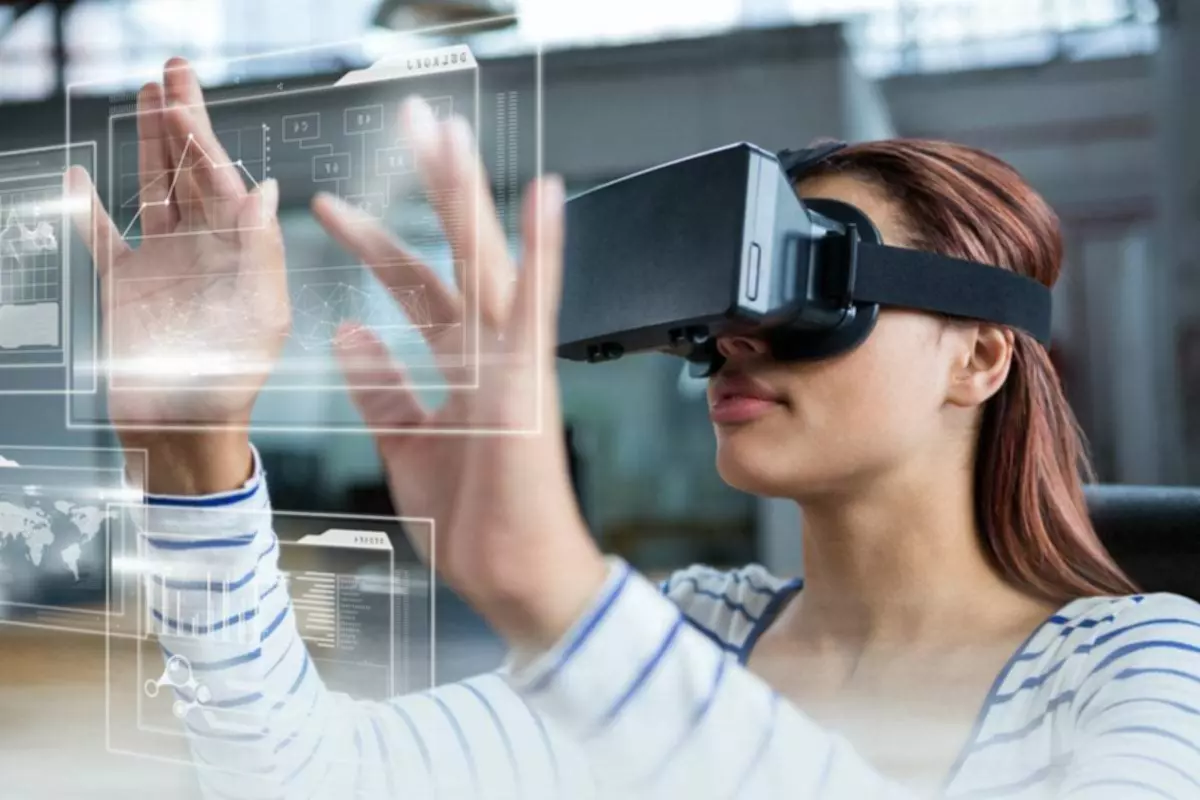Content
Choosing the suitable cloud service model depends on what parts of an application you want to be managed by the cloud provider and what parts you want to handle yourself. Software as a Service -The cloud provider hosts and maintains software that users may access, typically on a subscription basis. Through IoT devices, data can be stored and then processed and delivered to wherever necessary. The data will be available to be accessed by healthcare professionals and analyzed in real-time instead of going through the hassle of fragmented databases. Accenture offers a full spectrum of services to help maximize the benefits of edge computing. Containers provide a standardized deployment environment for developers to build and package applications.
If a single node goes down and is unreachable, users should still be able to access a service without interruptions. Moreover, edge computing systems must provide actions to recover from a failure and alerting the user about the incident. To this aim, each device must maintain the network topology of the entire distributed system, so that detection of errors and recovery become easily applicable. As an example an edge computing device, such as a voice assistant may continue to provide service to local users even during cloud service or internet outages. One definition of edge computing is the use of any type of computer program that delivers low latency nearer to the requests.
- Simply put, it’s the idea that data should be processed as close to the source as possible to minimize the load on the network and improve performance.
- And data volumes will continue to grow as 5G networks increase the number of connected mobile devices.
- Latency.Latency is the time needed to send data between two points on a network.
- Edge computing is one architecture that addresses the limitations of the centralized cloud and provides quick results for computing, more immediate insights, lower risk, more trust, and better security.
- This reduces bandwidth needs by a large amount and can save companies a fortune.
- With cloud infrastructure on demand, they can deploy applications in a fraction of the time and get to market sooner.
Digital twin is a critical enabler that organizes physical-to-digital and cloud-to-edge. The twin allows data and applications to be configured using domain terms around assets what is edge computing with example and production lines rather than database tables and message streams. Digital twins allow domain experts to configure applications to sense, think and act on the edge.
Microsoft and Tech Mahindra Collaborate for 5G Network Modernization
Software-defined networking allows users to configure the overlay networks. It also makes it easy to customize routing and bandwidth to determine how to connect edge devices to each other to the cloud. Fitzpatrick said that the big difference in edge computing vs. cloud computing comes down to full service vs. microservices. Edge computing is designed around the concept of microservices, where many small and simple applications handle a specific task and interact with each other. This usually requires that the application is designed for edge computing. Pre-existing applications typically don’t perform well in an edge computing environment.
Fog computing refers to decentralizing a computing infrastructure by extending the cloud through the placement of nodes strategically between the cloud and edge devices. Fogging enables repeatable structures in the edge computing concept so that enterprises can easily push compute power away from their centralized systems or clouds to improve scalability and performance. It will continue to enable many new use cases and open up opportunities for telecom providers to develop new services that reach more people. Immediate revenue models include any that benefit from greater data speed and computational power near the user. Edge computing isn’t a magic bullet for every problem data scientists face.
Provider’s view of edge
Telecom companies, for instance, are already implementing network automation at the edge. Similarly, organizations with a use case for internet of things solutions use autonomous robots and other machinery operating at the edge. Network automation at the edge makes autonomous edge devices more independent and less likely to fail.
By using Cloud computing, companies can significantly reduce both their capital and operational expenditures when it comes to expanding their computing capabilities. Know that the right workloads are on the right machine at the right time. Make sure there’s an easy way to govern and enforce the policies of your enterprise. Despite similar concepts behind both computing technologies, there are some key differences, with location being one of the most important. In recent years, all above models have become increasingly popular since they offer several benefits. The complexity of data can be summarized through a very simple example.

Edge computing brings analytics capabilities closer to the machine, which cuts out the middle-man. This setup provides for less expensive options for optimizing asset performance. Edge computing with 5G creates tremendous opportunities in every industry. It brings computation and data storage closer to where data is generated, enabling better data control and reduced costs, faster insights and actions, and continuous operations.
However, it is usually cheaper and easier for them to outsource this requirement to a third-party vendor based on the quality of the components used and the scale of operations. The automation of edge and cloud computing helps improve the efficacy of enterprise workloads, especially when compared to the traditional deployment and operation of IT infrastructure. Edge computing makes processing and storage of data instantaneous by bringing computing systems as close as possible to the device, application, or component that collects or generates data. Latency.Latency is the time needed to send data between two points on a network.
Autonomous Vehicles
Due to its centralized nature, data backup, business continuity, and disaster recovery are easier and less expensive in the case of cloud computing. Cloud computing vendors also improve organizational performance, boost economies of scale, and minimize network latency for their clients by regularly adopting the latest computing hardware and software. Scaling is typically quick and easy and brings with it zero downtime or disruption.

With edge cloud computing, the data is instead stored and processed at the network edge – literally the “edge of the network”, as close as possible to the end user. The edge node then communicates with the centralized servers as needed, but the data processing and storage happens at the edge, making it faster and more reliable. What are the differences between edge computing versus cloud computing? An edge is a computing location at the edge of a network, close to where the data is generated.
More Resources
Macrometa is a purpose-built hosted platform that offers an edge-native architecture for building multi-region, multi-cloud, and edge computing applications. Macrometa provides virtually unlimited edge nodes with a coordination-free approach and can be used with existing architecture without significant architectural changes. In addition, it automates data synchronization across multiple data centers allowing users to develop applications without requiring a specialized knowledge of data synchronization techniques. However, companies that set up their edge or cloud networks will find it easier to comply with data processing and storage regulations thanks to the advanced encryption and security features of edge and cloud computing solutions. Cloud infrastructure offers end users faster service and enhanced convenience than traditional IT infrastructure.
This is particularly true of cloudlets, mobile edge nodes, and decentralized data centers. Edge solutions provide low latency, high bandwidth, device-level processing, data offload, and trusted computing and storage. In addition, they use less bandwidth because data is processed locally.
The Future of the Edge
Consider a security firm, which has to monitor footages of the cameras it has installed. If a single camera footage is to be sent back to the control room, it can be achieved easily. However, in same scenario, if the live footage is to be transmitted from several different cameras, it becomes an entirely different story. Since 1993, FSP Group has followed the management conception “service, profession, and innovation” to fulfill its responsibilities as a green energy resolution supplier. One of the most cutting-edge applications of edge is frictionless store checkout in retail, allowing customers to pick up items off the shelves and walk out the door, getting checked out without waiting in line. How edge enablers like 5G and digital twins are driving the future of cloud, at the edge.
Related edge computing topics
To overcome such challenges, edge computing and fog computing are introduced. In the past, the promise of cloud and AI was to automate and speed innovation by driving actionable insight from data. But the unprecedented scale and complexity of data that’s created by connected devices has outpaced network and infrastructure capabilities. Fauna is designed to handle the real-time demands of edge computing applications. By combining technologies such as Cloudflare Workers with Fauna, you can create an edge app that runs at the edge and delivers results within milliseconds of your users worldwide.
In order to realize the full promise of scale, resiliency, and performance that edge computing provides, you need a globally distributed, serverless database that the edge functions can access. Though Edge Computing https://globalcloudteam.com/ comes with its processing advantages, it has certain liabilities too. Cloud services have been increasingly made safer through cybersecurity methods, which provide a guarantee that the data will not be breached.
You also lose money and resources if you don’t utilize all of your provider’s capabilities. It’s a pay-as-you-go service, and there’s no compensation for squandered time. Edge computing exists in different forms including device edge and cloud edge. Device edge is when processing happens on a machine with limited processing power next to the devices. Cloud edge uses a micro data center for data processing locally and communicating with the cloud. In some cases, endpoint devices are also capable of processing natively and communicating directly with the cloud.
Autonomy, AI and graceful failure planning in the wake of connectivity problems are essential to successful edge computing. Bandwidth.Bandwidth is the amount of data which a network can carry over time, usually expressed in bits per second. All networks have a limited bandwidth, and the limits are more severe for wireless communication. This means that there is a finite limit to the amount of data — or the number of devices — that can communicate data across the network. Although it’s possible to increase network bandwidth to accommodate more devices and data, the cost can be significant, there are still finite limits and it doesn’t solve other problems. Edge computing can help improve systems’ efficiency by reducing the amount of data that needs to be sent to the cloud.